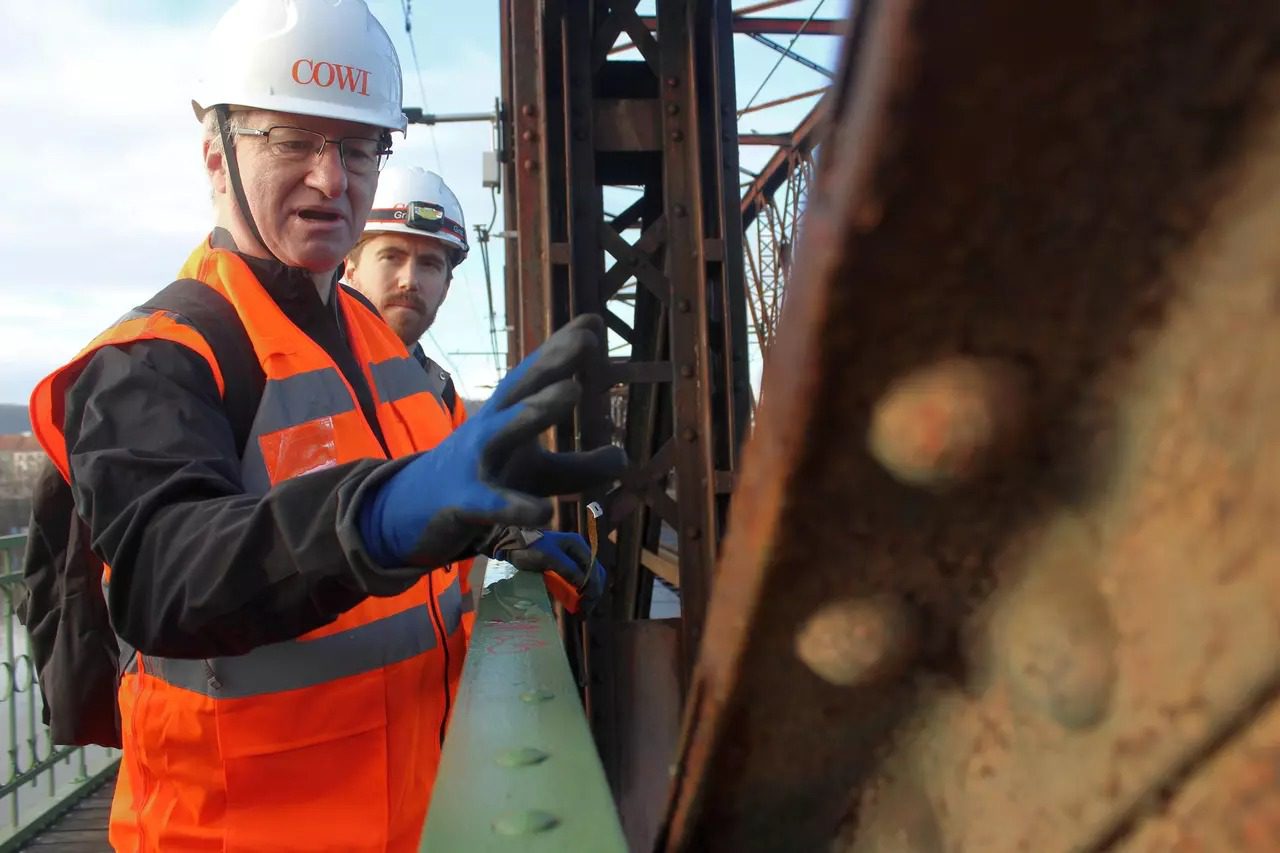Prague’s railway bridge under Vyšehrad is under inspection by leading engineers from British and Swiss firms. This week, under the supervision of the Railway Administration, they are examining the extent of damage on the riveted monument from 1901. Certain sections of the railway bridge’s construction are damaged, resulting in fewer trains crossing the bridge since December 10th.
The companies Cowi and WaltGalmarini requested the Railway Administration to allow them to complete their measurements and finalize the bridge repair study from 2021. According to David Mackenzie from Cowi, the monument’s life can be extended, as shown by examples in the UK and a much longer bridge in Turkey, where designers faced similar problems.
The challenge, according to Mackenzie, is how to preserve heritage. He characterized the railway bridge as a stunning monument of engineering skills. “We want to preserve as many original elements as possible,” Mackenzie stated. Some changes would be necessary, but the designers would strive to minimize them to keep the structure authentic.
According to Mackenzie, the repair could probably be accomplished through gradual minor interventions in line with the principles of sustainability and maintenance of existing structures. “We need to determine the number of repairs, how to do them, and how much time they will require,” he noted. Engineers are currently trying to determine the degree of degradation in various places.
According to Petr Tej, a Prague collaborator of British and Swiss designers, the study should be completed by the end of February. It will be presented to Minister Martin Kupka (ODS) for comparison with documents from 2T Engineering, which succeeded in the competition with a proposal for a new bridge.
According to Tej, the current bridge needs to be preserved for its own sake and its broader context. Prague has two iconic views: Charles Bridge with Hradcany and the railway bridge with Vysehrad. Since December 10th, fewer trains have been running across the bridge, which the Czech Technical University monitors. Some regional connections end at Smíchov station instead of the central station. The Railway Administration, which had announced such a restriction last year, now states that it decided on it based on the results of permanent monitoring.






